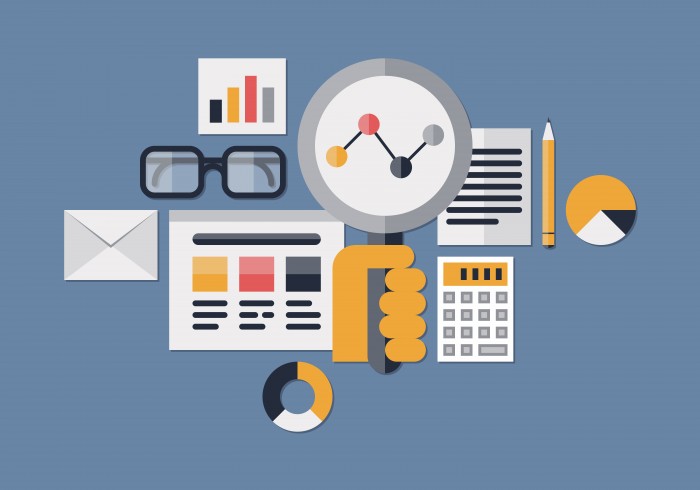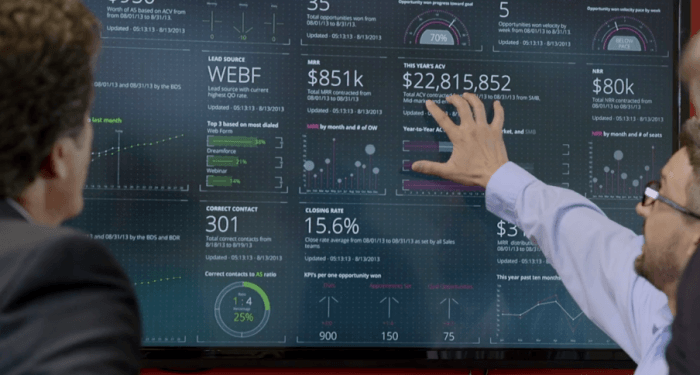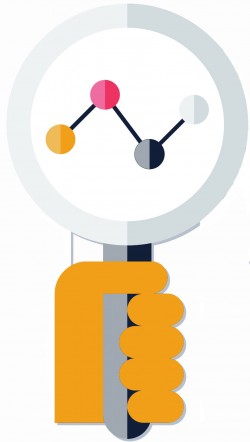 What in the world is data science? And why should you care?
What in the world is data science? And why should you care?
Data science – and predictive analytics, in particular – is moving the goalposts for salespeople and marketers alike. In fact, it’s moving the entire stadium. Predictive analytics is the foundational discipline that can make marketing more effective and targeted, and your salespeople better informed and more precise in their messaging.
Predictive analytics leverages a variety of techniques, including statistical analysis, modeling, machine learning, and data mining, to enable us to predict the future.
In recent years, predictive analytics techniques and technologies have helped elect presidents, discover new energy sources, score consumer credit, assess health care risks, detect fraud – even target prospective buyers.
In fact, the Obama presidential win in 2012 was driven at least partially by what is called “uplift,” or persuasion modeling. It’s a form of predictive analytics. Similarly, according to a recent IBM research study, U.S. insurance fraud now costs in excess of $80 billion a year, but companies employing predictive analytics for fraud detection significantly reduce their losses.
B2B Applications for Predictive Analytics
Lots of really smart people are using sophisticated science to help us solve all kinds of tricky problems.
In few places is the use of predictive analytics potentially more valuable than in marketing and sales. Imagine if you could accurately predict not only who your best leads and prospects are, but when and how to best communicate with them. This would empower marketing professionals and salespeople to be radically more productive.
It would also mean that sales forecasting could evolve from the dart-throwing exercise that it is at most companies today. That is the promise of predictive analytics technology when applied to sales and marketing automation solutions.
Big data and analytics companies, in addition to sales and marketing players, now represent some of the highest-flying success stories in all of high tech.
Companies like salesforce.com have been wildly successful in automating sales processes in organizations around the world. Other companies (such as Act-On) have enriched the marketing discipline with automation and tools for lead generation, lead nurturing, and lead scoring. LinkedIn has taken social business to an entirely new level by enabling data mining of connections.
Tableau and Domo are making databases and spreadsheets comprehensible for regular folks. FireEye is reimagining data security with real-time learning systems that prevent, detect and resolve security threats.
My company, InsideSales.com, improves the necessary baton-passing that occurs between marketing and sales.
The use of predictive analytics enables marketers to surgically target the best possible prospects with compelling offers. It also enables salespeople to know how and when to communicate with those prospects. Machine learning algorithms continuously learn more about every imaginable variable that could potentially impact a buyer’s decision-making process, and make that knowledge actionable.
Sales acceleration technology not only improves lead targeting, it also gamifies the selling process. As it turns out, some people really do prefer the stick to the carrot. Nike, Fitbit, and others have tapped into this with their red-hot wearable technologies for athletes. In our company, we’ve learned it through our efforts to maximize the motivation of salespeople.
Like a Magic Crystal Ball
Achieving real sales acceleration requires predictive data science to work its magic crystal ball on the entire marketing and selling process. We’ve painstakingly analyzed years of data on the correlations between buying behaviors and just about every significant environmental variable you can fathom – from the stock market to weather, and even the lunar calendar.
For example, we’ve discovered statistically meaningful correlations for buying behavior and contactability based on day of the week and time of day. It turns out there’s a world of difference in contact rates on Thursdays versus Tuesdays. It is also fascinating to note that early mornings and late afternoons are significantly better for contacting prospects than the heart of the workday.
Now, I realize that some of this may sound like common sense, but some of it is counterintuitive; in either case, many organizations continue to ignore this information.
To carry this one step further, we even went so far as to determine how important immediacy is to web leads. It turns out that responding immediately means everything. If you don’t respond to a lead within five minutes of that initial touch, your chances of contacting, qualifying, and closing that lead plummet. Enabling sales to strike while the iron is still hot is just one example of how to use technology strategically to act on the insights data analysis provides.
Data science is radically changing B2B marketing and sales. Science isn’t just for college professors, geologists and politicians anymore. It’s time to kick it up a notch, so get ready to get your geek on.
 Check out what’s happening in the world of predictive analytics and see how it can help you hit your revenue targets more consistently and crush your competition.
Check out what’s happening in the world of predictive analytics and see how it can help you hit your revenue targets more consistently and crush your competition.
Mick Hollison is the chief marketing officer at InsideSales.com, the leading cloud-based sales acceleration technology company.
Ready to learn how to get the data that’s produced in the digital marketing funnel? Download the free Act-On Toolkit now:



